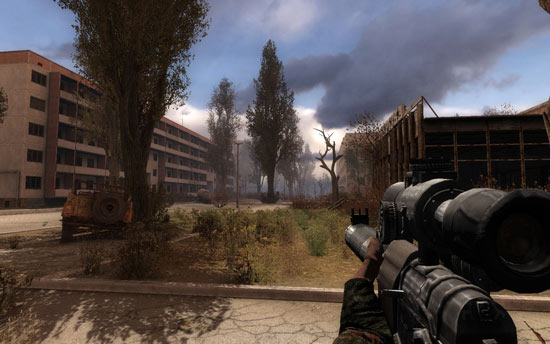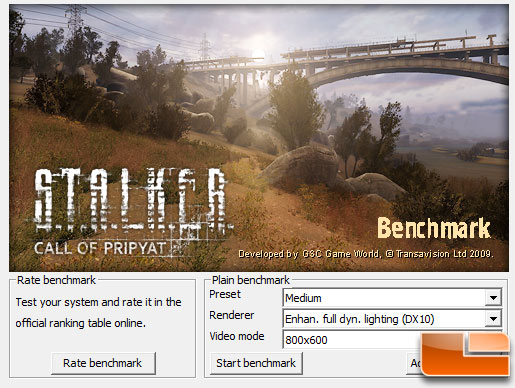AMD FX-8150 Processor Review – Bulldozer Arrives
S.T.A.L.K.E.R.: Call of Pripyat

The events of S.T.A.L.K.E.R.: Call of Pripyat unfold shortly after the end of S.T.A.L.K.E.R.: Shadow of Chernobyl following the ending in which Strelok destroys the C-Consciousness. Having discovered the open path to the Zone’s center, the government decides to stage a large-scale operation to take control of the Chernobyl nuclear plant.
S.T.A.L.K.E.R.: Call of Pripyat utilizes the XRAY 1.6 Engine, allowing advanced modern graphical features through the use of DirectX 11 to be fully integrated; one outstanding feature being the inclusion of real-time GPU tessellation. Regions and maps feature photo realistic scenes of the region it is made to represent. There is also extensive support for older versions of DirectX, meaning that Call of Pripyat is also compatible with older DirectX 8, 9, 10 and 10.1 graphics cards.

The game S.T.A.L.K.E.R.: CoP has no internal benchmarking tools built into the game engine, but they do have a standalone benchmark available that we used for our testing purposes. The screen capture above shows the main window of the benchmark with our settings. Notice we are running Enhanced Full Dynamic Lighting “DX10” as our renderer. Under the advanced settings we disabled tessellation, MSAA and ambient occlusion.

S.T.A.L.K.E.R.: Call of Pripyat looks to only be threaded for one CPU core as you can see from the Windows Task Manager screen capture that was done during a benchmark run.

Benchmark Results: S.T.A.L.K.E.R.: Call of Pripyat doesn’t exactly scale well across multiple cores. Across the processors that are considered ‘Enthusiast Level’ (Intel Core i7 990X, 2600K, AMD Phenom II X6 1100T, X4 980BE) there is very little performance difference. With the exception of the Intel Core i7-2600K at 1024×768 which was 20% faster than anything else on the board. The AMD FX-8150 fell right in line at 1920×1080 with an average frame rate of 55 frames per second. The highest average at 1920×1080 was the Intel Core i7-2600K with an average of 57 frames per second and the lowest of the upper echelon was the Intel Core i7-990X with an average of 54 frames per second.

Comments are closed.